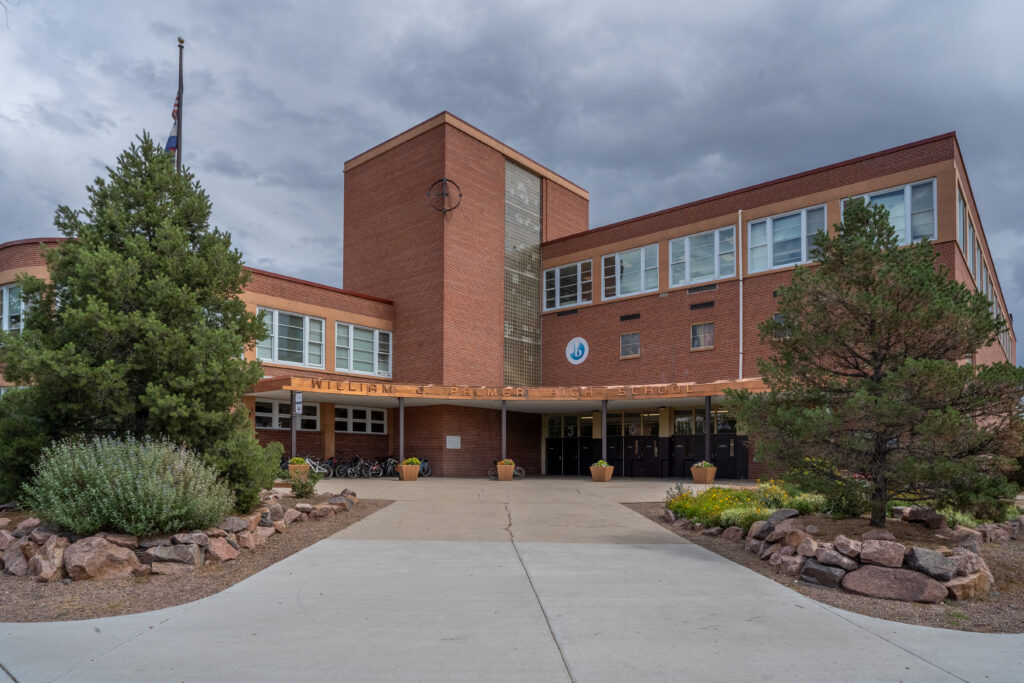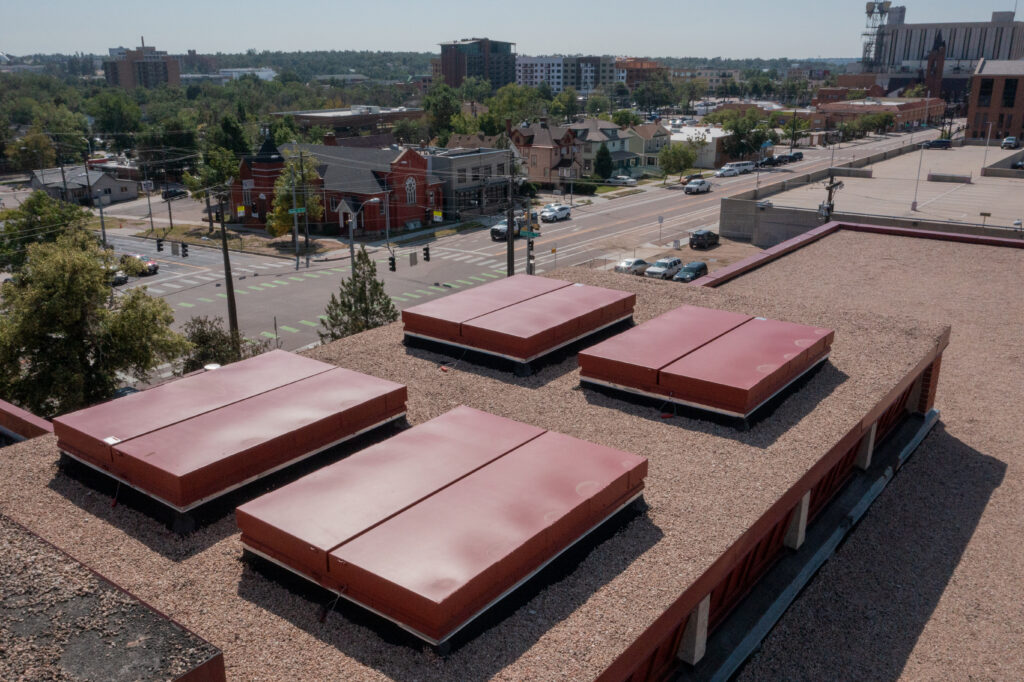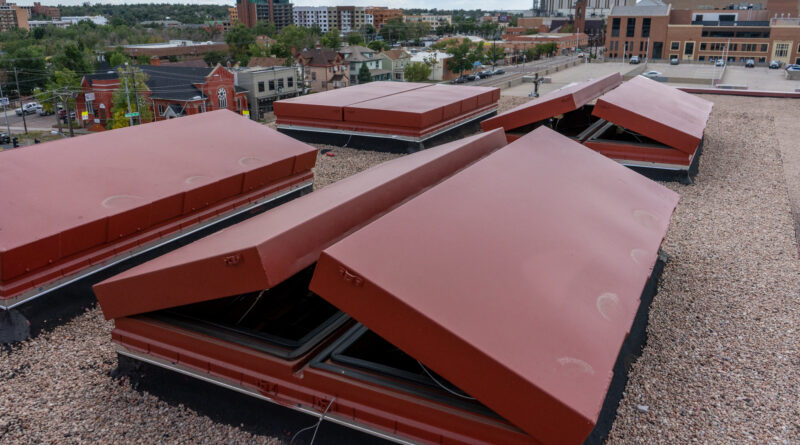Smoke Vents
A Solution for Age-Old Problem at High School in Colorado Springs, Colorado
by Thomas Renner, senior account executive, Mercury Marketing Communications
Workers from the Work Projects Administration (WPA) built 113 schools in Colorado in the late 1930s and early 1940s, and many of them are still in use today. One example is Palmer High School in Colorado Springs, Colorado, which was built in 1940. Nearly 1,600 students attend the school, which has the oldest International Baccalaureate program in the area. The school remains structurally and mechanically sturdy, but there are signals that reflect on the building materials and design strategies of the WPA workers.

One concern cropped up with the school’s existing smoke vents. The vents help protect lives and property in case of a fire. They allow for the removal of heat, smoke, and poisonous toxins that develop during a blaze, and help firefighters bring a blaze under control more quickly.
In most cases, vents are installed on top of the roof. In Palmer’s case, however, WPA workers installed vents vertically on a cast-in-place structure on the roof. “They designed other schools in the area the same way,’’ said Don Johnson, executive vice president of iiCON Construction, Colorado Springs, the general contractor on the project. “I don’t know how they got them to function.”
The vents were also thermally inefficient and could not be tested, according to Vernon Champlin, senior consultant with the fire protection engineering firm Jensen Hughes.
A team that included District 11 officials; Frank Kaiser of LKA Architects, Colorado Springs; and Jensen Hughes designed a unique solution. The existing vents were sealed and left in place. New vents were placed in sections cut out on the concrete structure atop the roof.
Chopping Block
Workers replaced the entire roof in the project, but the biggest challenge was determining how to handle the existing smoke vents. “While they were considered advanced technology over a hundred years ago, the existing non-conforming smoke ventilation system in the Palmer High School consisted of 24 vertically hinged doors that could be remotely opened 45 feet above the floor,’’ Champlin said. “The complex system of jute ropes and pulleys allowed the ventilation doors to fall open simultaneously via gravity from a single manual releasing point on the stage. As codes and technologies advanced, these antiquated systems have become obsolete, and worse, there is no applicable standard for inspection, testing, or maintenance.”

Instead of removing the vents, they were left in place and sealed and insulated to improve energy efficiency and acoustics but remain on the structure. Portions of the existing concrete roof deck were removed to provide openings where the new smoke vents were to be installed. With assistance from a crane, saw cutter, and intense labor, workers removed nearly 4,000 lbs. of concrete.
Johnson said workers paid particular attention to concrete removal, because they were afraid of pieces falling into the school. All the removal work was done while school was out of session. Cutting into the roof concerned school officials.
“Student safety is paramount and cutting any hole in a roof is a big deal,’’ said Jennifer Hotaling, assistant capital program manager for D11 Schools. “At the end of the day, our whole team of dedicated professionals came together to provide taxpayers with the best possible solution.”
Installation Challenges
Roofing professionals installed four acoustical smoke vents from BILCO®, the manufacturer of specialty access products. The 5×7 vents include security bars welded in place to prevent unauthorized entry and a manual winch. Creating the opening for the vents and extricating concrete was only the first part of the process to install the vents. Theatrical spaces present challenges due to rigging and cables that limit the work area under the roof.

“There was a lot of concern to protect the interior space when they were installed, and the logistics of getting up there and working from above the stage,’’ Hotaling said. “They had to build a platform under the concrete to catch the water, dust, and debris. While they were cutting, we were checking for leaks and making sure there was nothing falling on the stage floor.”
Limiting Noise
Acoustical smoke vents exhibit the properties of traditional smoke vents and are also designed to prevent noise intrusion. They are installed at theaters, concert halls, and other applications that require limiting noise from external sources. BILCO vents have an industry-high OITC-46 and STC-50 sound ratings. The vents include a fusible link to ensure operation should a fire occur.

“Palmer High School is in a downtown area where there is a lot of siren noise,’’ Kaiser said. “Even weather, such as hail, can be loud. We wanted to make sure during performances we could mitigate any exterior noise that could be a potential problem. We like the BILCO products, as they seem to be the one that we see on most of our projects.”
History Lesson
Palmer High School opened as the first high school in Colorado Springs in 1875. With the assistance of the WPA, construction on the latest version of Palmer began in 1938 at a cost of $670,000. Then known as Colorado Springs High School, the building was designed by Edward Burns, a 1921 graduate of the school.
“At the time, the building was called one of the West’s most attractive architectural designs,” according to an article published in the Colorado Gazette. “The school offered numerous amenities, including six porcelain drinking fountains and a spacious, well-lit cafeteria.’’
While small, the project had special significance for the architect. “It was a very specialized project,’’ Kaiser said. “We also worked with the local building department and the fire department to make sure it passed muster. The school was well-built and plenty strong to handle the new smoke vent openings. We didn’t have to do any remedial structural work. Everybody in Colorado Springs knows about Palmer High School, and we were glad to be a part of this project.”



